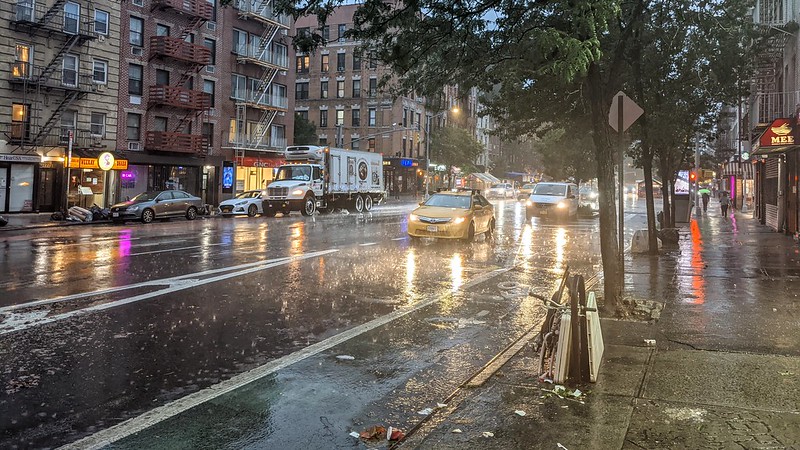
Photo: Eden, Janine and Jim/Flickr
Extreme Weather Coordinator appointed for New York City
28 September 2021
by Sarah Wray
In the wake of Hurricane Ida, New York Mayor Bill de Blasio has launched a “blueprint” for how the city will prepare for and respond to extreme weather.
The city “will plan for the worst-case scenario in every instance,” the report says, meaning earlier warnings, more evacuations, and more travel bans in the lead-up to storms, overseen by an Extreme Weather Coordinator in City Hall. Starting immediately, Deputy Mayor for Administration Emma Wolfe will be the first to serve in the newly created role.
The New Normal: Combatting Storm-Related Extreme Weather in New York City report was prepared by the city’s cross-agency Extreme Weather Response Task Force and external experts. The mayor announced plans to support recommendations including US$2.1 billion in new funding for the Department of Environmental Protection (DEP) and an additional US$400 million for new priority capital projects at other city agencies.
“Extreme weather is more common than ever, and more severe than ever. Business as usual is over,” said de Blasio. “Keeping New Yorkers safe means profoundly changing the way we prepare for – and react to – this new normal. This new report charts a path forward for investing in vulnerable neighbourhoods, shoring up our infrastructure, warning communities ahead of major weather events, and better tracking storms before they arrive.”
Data and drones
Hurricane Ida is reported to have caused at least 82 deaths in the US, with most of the 13 killed in New York City trapped in basement apartments.
Starting in 2022 a new programme called Rainboots on the Ground will distribute educational information on evacuation procedures to basement apartment residents and vulnerable neighbourhoods through partnerships with community-based organisations.
The city will also build a longer-term plan to convert around 50,000 illegal basement apartments into safer homes.
Enhancing data infrastructure is also a priority, including expanding the Flood Sensor Network citywide, using drones to capture real-time crisis information, and developing a citywide map of combined flood risk and model of all flooding hazards.
The emergency management department is in the process of hiring a private weather forecasting vendor, which will provide a “second opinion” on what the city hears from the National Weather Service (NWS), build local forecasting down to the neighbourhood level, and develop custom on-demand forecasts, with access to data and models NWS does not have. De Blasio said the NWS does “good and important work,” but often its reports “were too vague or too late and we need something more urgent.”
Upgrades including porous pavements and green infrastructure are planned but the city faces a “massive challenge” in overhauling its ageing, 7,400-mile sewer system. The full required work is estimated to cost US$100 billion and would be dependent on federal funding, the report says. A US$2 billion sewer system upgrade is underway in Southeast Queens.
At its peak, the storm dropped a record 3.15 inches of rain per hour on the city, beyond the 1.5-2 inches per hour capacity of its sewer system. The preliminary damage estimate to New York City is US$38 million but this figure is expected to be much higher when damage to citywide infrastructure is taken into account in the coming months.
Image: Eden, Janine and Jim/Flickr







